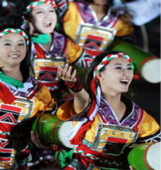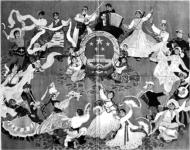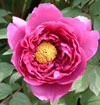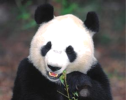1.1931年日本入侵中国,中国人民为寻求解放,进行了长达十四年的抗日战争。
2.中国军队的武器虽然落后,但他们始终坚信能够战胜装备了飞机、大炮及坦克的敌人。(形容词短语作状语)
3.面对敌人的狂轰滥炸,中国军民团结一心,奋勇杀敌。(过去分词短语作状语)
4.在付出了巨大的代价后,中国人民赢得了这场战争的光辉胜利。
5.中国抗日战争的胜利为世界反法西斯战争的胜利奠定了基础。
6.难怪有人说中国人民抗日战争的伟大胜利将永远铭刻在人类正义事业史册上。
___________________________________________________________________________________________________________________________________________________________________________________________________________________________________________________________________________________________________________________________________________________________________________________________________________________________________________________________________
1. Which is very beautiful in comparison to the North Island?
| A.The North Pole. | B.The West Island. | C.The South Island. |
| A.The center of the North Island. |
| B.The West Coast of the South Island. |
| C.The center of the South Island. |
| A.In rural New Zealand. |
| B.In the center of the North Island. |
| C.On the West Coast of the South Island. |
| A.Maori culture. | B.Ice mountains. | C.Interesting farming. |
1. Why do some travelers hesitate about travelling in Japan?
| A.Japan is crowded. | B.The sightseeing is tiring. | C.Travel expenses are high. |
| A.Two days. | B.Three days. | C.Seven days. |
| A.Buying a bus pass. | B.Asking for a discount. | C.Experiencing major holidays. |
| A.A man over 65. | B.A child over 12. | C.A 60-year-old woman. |
1. What’s the speaker probably?
| A.A musician. | B.A cook. | C.A worker. |
| A.It has its own national type of music. |
| B.It has the oldest bookstore in the world. |
| C.It is the oldest country in Europe. |
| A.The beaches. | B.The major cities. | C.The northern forest area. |
| A.After finishing university. |
| B.After a few years of work. |
| C.After his retirement. |
1. Who is the speaker talking to?
| A.Tourists. | B.Students. | C.Writers. |
| A.Parking lots. | B.Car lots. | C.Car parks. |
| A.It is dry. | B.It is boring. | C.It is obvious. |
| A.The numbers of artists. |
| B.Styles of buildings. |
| C.Standards of living. |
| 地理位置 | 太平洋上的岛国,由两个大岛组成。 |
| 产业 | 重要农业国;主要出口羊毛、羊肉、牛肉、林产品、水果和蔬菜;葡萄酒质量很高,行销全世界。 |
| 体育与假日 | 航海、游泳、骑马、攀岩;到山里或海滨露营。 |
| 自然与动物 | 自然美,吸引游客;国鸟“几维”, 不会飞。 |
___________________________________________________________________________________________________________________________________________________________________________________________________________________________________________________________________________________________________________________________________________________________________________________________________________
| Name of the country | The People’s Republic of China |
| Capital city | Beijing is the capital of the People’s Republic of China. 43.5 meters above sea level, Beijing covers an area of 16,808 square kilometers and has a resident population of 21.7 million (the year 2017). Under the city’s control there are 10 districts and 8 counties. Beijing’s history as a city can date back to 3,000 years ago. Its time-honored history left Beijing plenty of historical relics and colorful customs. As the center of the country, here gathers the offices of the Party, the Government and the Military, as well as headquarters of national companies, industrial associations and financial institutions. Beijing is in the central place of the nation’s financial decisions and macro-control. It is also China’s most prosperous city in terms of science, education and culture, because it covers all subjects of sciences and has strong research capabilities. Beijing is the communication pivot between China and the international community and, the most important center for international exchanges. |
| Population | China has a population over 1.39 billion people (the year 2017), and over 58.52% of the total (the year 2017) are distributed in urban area. Strict population controls was in place for several decades, but now two-child policy has been carried out. |
| Area | China has a territory area of 9.6 million square km, second to Russia and Canada, with a sea area of about 4.73 million square kilometers. |
| Location | In East Asia, border on the west Pacific Ocean |
National flag | The National Flag of the PRC is a red rectangle emblazoned with five stars. The proportion of its length and height is 3 to 2. The upper left of the face of the Flag is set with five yellow five-pointed stars. One of the stars is bigger than the others, with its circumcircle’s diameter being three-tenth of the height of the Flag, and is placed in the left; the other four stars are smaller, with their circumcircle’s diameter being one-tenth of the height of the Flag, surrounding the big star on its right in the shape of an arch. |
| National anthem | March of the Volunteers (lines: Arise, those who do not want to be slaves! We will use our flesh and blood to build another Great Wall. China has reached the brink of national collapse. All the people have been making their last outcry. Arise! Arise! Arise! All our hearts become one. Let us face the enemy’s gunfire. March on! Let us face the enemy’s gunfire. March on! March on! March on! On!) |
| National Emblem | The National Emblem of the PRC features Tiananmen Gate beneath the five shining stars, encircled by ears of grain and with a cogwheel at the bottom. The ears of grain, stars, Tiananmen and cogwheel are gold; the field within the circle is red, as are the ribbons festooning the bottom of the circle.
|
| National flower | Peony |
| National Animal | giant pandas |
| Ethnic groups | There are 56 ethnic groups in China. The Han people make up 92 percent of the country’s total population, totaling 1159.4 million; and the other 55 ethnic groups, 8 percent, totaling 106.43 million. |
| Languages | Of the 56 ethnic groups in China, the Hui and Manchu use the same language as Han people, while the rest groups have their own spoken and written languages. |
| Written languages | 23 ethnic groups have their own characters. |
| Religion | The main religions are Buddhism, Taoism, Islam, Christianity, and Catholicism. Chinese citizens’ right of the freedom of religious belief is protected by the Constitution and laws. |
| Main festivals | New Year’s Day (January 1), the Spring Festival (the New Year’s Day by Chinese lunar calendar), International Labor Day (May 1), and the National Day (October 1) |
| Currency | Renminbi (RMB) yuan |
| Time difference | 8 hours earlier than the Greenwich |
| Climate | Most of the country is in the temperate zone, although geographically the country stretches from the tropical and subtropical zones in the south to the frigid zone in the north. |
| Topography | High in its west and low in its east: mountain areas 33.3%, plateaus 26%, basins 18.8%, plains 12% and hills 9.9%. |
| Mountains | Among the 19 mountains over 7,000 meters high in the world, seven are in China. The Qinghai-Tibet Plateau, known as “the roof of the world”, has many high mountains. The Himalayas, with an average elevation of 6,000 meters, have the world’s highest peak Mount Qomolangma, 8,848 meters above sea level. |
| Rivers | The Yangtze River, 6,300 km long, is the third longest in the world after the Nile and the Amazon. The Yellow River, the second longest in China, stretching 5,464 km. |
| Canal | The Grand Canal, 1,801 km long, is the longest man-made river in the world. Its cutting began in the fifth century BC. |
| Lakes | The Poyang Lake on the middle and lower reaches of the Yangtze River is China’s largest freshwater lake, with an area of 3583 sq. km; the Qinghai Lake on the Qinghai-Tibet Plateau is the country’s largest salt lake, covering 4583 sq. km. |
| History | China is one of the world’s oldest civilizations with a chronicled history of more than 5,000 years. China has gone over a long history of primitive society, slavery society, feudal society and semi-feudal semi-colonial society and the present socialist society. In 221 BC, Qinshihuang established the Qin Dynasty, the first feudal autocracy in Chinese history, therefore unveiling a 2,000-year period of feudalism which was to last through a succession of dynasties such as the Han, Tang, Song, Yuan, Ming and Qing, a period which finally met its end in the bourgeois democratic Revolution of 1911 by Dr. Sun Yat-sen. October 1, 1949 saw the founding of the People’s Republic of China. |
| Famous Tourist Attractions | Tiananmen Square, Badaling Great Wall, the Imperial Palace, the Summer Palace, the Water Cube, Chengde Imperial Summer Resort, Hulunbuir Pasture Land, Shenyang Imperial Palace, the Bund, the Oriental Pearl Tower, Mount Huang, Mount Lu, Mount Tai, the Longmen Grottoes, the Three Gorges, the Potala Palace, figurines of soldiers and horses from the Qin Mausoleum. |
| Traditional Festivals | Spring Festival, New Year’s Day, Lantern Festival, National Day, Dragon Boat Festival, Mid-Autumn Festival, Tomb-Sweeping Festival. |
2. Describe the National Emblem and its meaning.
3. Please list some main festivals of China?
4. Which time zone does China lie in?
5. What is The Qinghai-Tibet Plateau known as?
6. Which is the longest river in China?
7. Please list some famous tourist attractions in China.
8. Please list some typical traditional festivals.
字数:80-100。
提示:(1) 我国有十三亿多人口,是世界上最大的国家之一。首都是北京。
(2) 我国人民勤劳勇敢,具有光荣的革命传统(tradition)。
(3) 一九四九年解放后,我国发生了巨大的变化。
(4) 我国人民为了把自己的国家建设成为一个强大的社会主义国家,正在辛勤劳动。
____________________________________________________________________________________________________________________________________________________________________________________________________________________________________________________________________________________________________________________________________________________________________________________________________________________________________________________________________________
9 . 
China is a unified nation consisting of many different ethnic groups. Fifty-six different ethnic groups make up the great Chinese national family. Because the Han people accounts for more than ninety percent of China’s population, the remaining fifty-five groups are generally referred to as “ethnic minorities”. Next to the majority Han, the Mongolian, Hui, Tibetan, and Uygur peoples comprise the largest ethnic groups. Although China’s ethnic minorities do not account for a large portion of the population, they are distributed over a vast area, living in every corner of China.

Particularly since the achievement of China’s opening and reform policy, the central government has increased investment in minority areas and accelerated their opening to the outside world. This has resulted in a rise of economic development in these areas. Each of China’s ethnic minority groups possesses a distinctive culture. The Chinese government respects minority customs, and works to preserve, study, and collect the cultural artifacts of China’s ethnic minority groups. The government vigorously supports the development of minority culture and the training of minority cultural workers, and fosters the development of traditional minority medicine.

The relation among China’s ethnic groups can be described as “overall integration, local concentration, and mutual interaction.” Concentrations of ethnic minorities reside within predominantly Han areas, and the Han people also reside in minority areas, indicating that there have been extensive exchanges among China’s ethnic groups since ancient times. With the development of the market economy, interaction among ethnic groups has become even more active in the areas of government, economics, culture, daily life, and marriage. Linked by interdependence, mutual assistance, and joint development, their common goals and interests creating a deep sense of solidarity, China’s ethnic groups resemble a great national family, together building Chinese civilization. (290 words)
1. How many peoples are there in the People’s Republic of China?2. Can you list some minorities of China?
3. Can you talk about typical character of some minorities of China?
10 . Scotland is a country in Great Britain, to the north of England. Scotland has nearly 800 islands, but people only live on some of them. About five million people live in Scotland, which is 8.5% of the UK population. Most people live in the south of the country, in and around the cities of Edinburgh, Glasgow, Perth and Dundee.
Language
In Scotland, most people speak English and Scots and a minority speak Scottish Gaelic, an old Celtic language which is very different from English. Scots is spoken by young and old people and sometimes people mix Scots and English. Some words in Scots are the same as in English and some are different.
Sport
The most popular sport in Scotland is football and famous teams include Celtic and Rangers, from Glasgow, Scotland’s biggest city. Another popular game, golf, was invented in Scotland in the Middle Ages. You can go skiing in winter at Scotland’s five mountain ski fields and any time of the year at snow sports centers around the country.
Food
When people think of Scottish food, they often think of haggis, a type of sausage made from parts of a sheep. However, Scotland is also known for its variety of seafood and beef.
Symbols
Blue is a colour which is often connected with Scotland. The Scottish flag is blue with a white X-shaped cross called the Saint Andrew’s cross. St Andrew is the Patron Saint(守护神) of Scotland. Everywhere you go in Scotland, you will see tartan(苏格兰格子呢), kilts and bagpipes. Also, look out for the national animal, the unicorn, and the thistle, the national flower of Scotland.
1. What can we learn from the first paragraph?| A.The Scottish live separately on 800 islands. |
| B.Most of the Scottish live in big cities. |
| C.8.5% of the UK population live in Scotland. |
| D.Scotland lies to the north of Great Britain. |
| A.Two. | B.Three. | C.Four. | D.Five. |
| A.Scotland is the birthplace of golf. |
| B.Celtic and Rangers are famous golf clubs. |
| C.The special Scottish food is its seafood. |
| D.The Scottish flag is white with a blue cross. |






